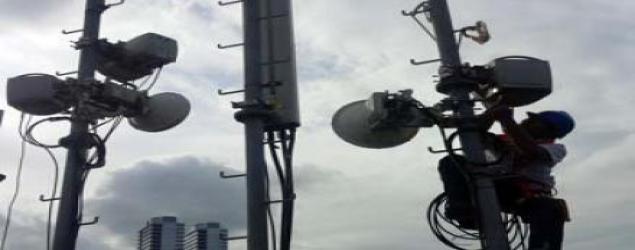Sneak Peek on 4G Migration Strategy for 1.800 MHz
13:08:54 | 19 Jan 2015

Ilustrasi (dok)
JAKARTA (IndoTelko) - The Indonesian Ministry of Communication and Informatics, Kemenkominfo, is reaffirming to make available the 1.800 MHz frequency for the Frequency Division Duplexing Long Term Evolution (FDD-LTE) based 4G services gradually in the first quarter of 2015.
"We have submitted the recent developments of migration scenario options for the 1,800 MHz frequency and swap to 4G in detail to the ministry. It will be delivered on Monday (19/1) to four Indonesian telecommunication operators who occupy the 1,800 MHz frequency. If they had no specific reason occupying the frequency, then regulators will make their decision," said Indonesian telecommunication Regulatory Agency Committee (ITRB) Member Nonot Harsono, to IndoTelko, on Sunday (18/1).
Nonot said that in preparing the inclusion of 4G technology in 1800 Mhz, there will be no transit canal. The major thing needed to be done is to manage the frequency bands' allocation therefore operators can occupy adjoining frequency by swapping positions at each site in stages per region.
"To change the technology is simply by switching off the old base stations (BTS), and replacing it with the 4G ready BTS, done!. There is no need to transit the canal. The not simultaneous issues would be coming from the dominant number of 2G subscribers which cannot be forced to replace their 2G handheld to 4G directly. So some part of the 1.800 MHz frequency band would still be allocated for 2G users." he said.
Nonot said that in managing the frequency canal would not be based on the costumer or operator owned networks basis, but rather the latest allocation that will be occupied in order to get adjoining frequency.
"Who own the BTS in one region and must be replaced, and then the operator should replace it during non-busy hours such as from 1.00 am to 4.00 am. We try as much as possible not to move the 2G band to reduce the work load. Thus, the regulator would simply set the position at the end of the band, then switching and scheduling stage and the implementation would be under heavy monitor," Nonot said.
Earlier, the government provided the 1800 MHz frequency is open for 4G based services gradually or per islands not nationwide as it still need to rearrange the frequency possession and the number of 2G subscribers of the four GSM operators.
The plan draws a variety of responses from the operators, because there are 180 million Indonesian 2G subscribers still occupying the 1,800 MHz spectrum. These 2G subscribers consist of 90 million Telkomsel subscribers, 35 million Indosat subscribers, 30 million XL Axiata Subscribers and 20 million Tri subscribers.
Besides supporting the government's discourse to initiate the foremost migration process in low traffic areas is to minimize the risk (risk management and risk assessment). There is also a suggestion that the operator must have a frequency buffer during the migration process. That frequency buffer functions as transiting bus shelters before switching to the actual allocation (permanent place).(es)
Baca juga :
•
•
•
Artikel Terkait
-
 English Ver. - 04:06:00 | 25 Aug 2025The collaboration is designed to simplify complex payment processes for global travel businesses
English Ver. - 04:06:00 | 25 Aug 2025The collaboration is designed to simplify complex payment processes for global travel businesses -
 English Ver. - 04:07:00 | 11 Aug 2025Wireless Logic has completed the acquisition of Zipit Wireless
English Ver. - 04:07:00 | 11 Aug 2025Wireless Logic has completed the acquisition of Zipit Wireless -
 English Ver. - 05:00:00 | 27 Jul 2025JLL’s involvement included identifying and securing a site that met DAMAC’s technical and strategic requirements
English Ver. - 05:00:00 | 27 Jul 2025JLL’s involvement included identifying and securing a site that met DAMAC’s technical and strategic requirements
Rekomendasi
Berita Pilihan
More Stories
PR Newswire








.jpeg)
















































